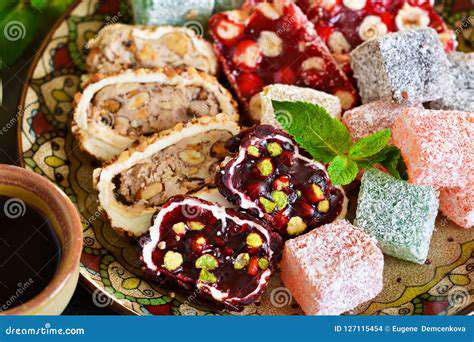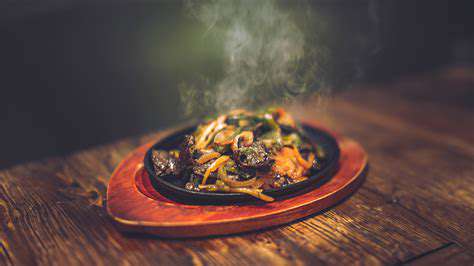Authentic Turkish Delight: Sweet & Fragrant
Jun 23, 2025 / btwgardenmachine/
A Timeless Tradition
Few confections have stood the test of time like Turkish Delight, whose soft, chewy texture and delicate flavors have enchanted dessert lovers for generations. This iconic sweet traces its origins to the lavish courts of the Ottoman Empire, where it was prized as a symbol of hospitality and refinement. The traditional methods used to create Turkish Delight - from slow-cooking the syrup to hand-cutting each piece - reflect centuries of perfected craftsmanship.
What began as a royal delicacy eventually found its way to common marketplaces, becoming a beloved treat across social classes. Travelers and traders carried its fame beyond Ottoman borders, introducing the world to this unique Middle Eastern confection.
The Ingredients: A Symphony of Flavors
At its core, authentic Turkish Delight relies on a simple yet ingenious combination of ingredients. The base typically consists of cornstarch or another plant-derived starch, which gives the candy its distinctive soft yet firm bite. Rosewater remains the most traditional flavoring, imparting a subtle floral essence that distinguishes it from Western sweets.
Innovative confectioners have expanded the flavor palette over time, incorporating ingredients like:
- Crushed pistachios or hazelnuts for texture
- Citrus zests for brightness
- Warm spices like cinnamon or cardamom
This versatility has allowed Turkish Delight to evolve while maintaining its essential character.
Royal Indulgence and Cultural Significance
In Ottoman society, Turkish Delight was far more than dessert - it represented an art form. Palace kitchens employed specialized confectioners (helvacılar) who dedicated their careers to perfecting these sweets. The presentation was equally important as taste, with pieces often arranged in elaborate patterns or wrapped in delicate papers.
The candy played a role in important ceremonies and diplomatic exchanges. Foreign ambassadors frequently received ornate boxes of lokum (the Turkish name) as gifts, helping spread its reputation internationally.
From Ottoman Palaces to Modern Kitchens
While modern manufacturing has introduced efficiencies, the best Turkish Delight producers still adhere to traditional methods. The process remains labor-intensive, requiring:
- Precise temperature control during syrup cooking
- Patient resting periods for proper texture development
- Meticulous hand-cutting and dusting with powdered sugar
Contemporary variations might include novel flavors like mango or chocolate, but purists maintain that the rose-scented original best represents the authentic experience.
The Role of Sugar in the Sweet Treat's Evolution
The widespread availability of refined sugar in the 18th century transformed Turkish Delight production. Previously, honey had been the primary sweetener, but sugar's neutral flavor and preservative qualities allowed the candy's delicate floral notes to shine. This shift also made the confection more shelf-stable, enabling broader distribution.
Modern producers sometimes use glucose syrup to prevent crystallization, though traditionalists argue this alters the authentic mouthfeel.
The Art of Turkish Delight Production
Creating premium Turkish Delight demands both scientific precision and artistic sensibility. The process begins with carefully boiling sugar syrup to precisely 240°F (116°C), then slowly incorporating the starch mixture while maintaining constant agitation. The most skilled makers can judge the perfect consistency by the way the mixture drips from a spoon - a technique learned through years of experience.
After pouring into shallow trays, the candy must rest for 24-48 hours before cutting. Master confectioners then dust each piece with a blend of powdered sugar and cornstarch to prevent sticking while maintaining the traditional appearance.

Beyond the Sweetness: Exploring the Varied Flavors

Unveiling the Layers of Flavor
Exceptional Turkish Delight offers more than simple sweetness - it presents a sophisticated interplay of flavors that unfold gradually. The initial sugary hit gives way to subtle floral notes from the rosewater, followed by delicate aromatic undertones. These nuanced flavor progressions separate mass-produced versions from artisanal creations.
Modern flavor innovations have expanded the possibilities while maintaining the candy's essential character. Some contemporary variations include:
- Pomegranate molasses for tart complexity
- Orange blossom water as an alternative to rose
- Ground mastic resin for a piney, aromatic note
The Sensory Symphony of Culinary Experiences
Enjoying premium Turkish Delight engages all the senses. Visually, the dusted cubes display a matte finish that hints at their soft texture. The light floral aroma prepares the palate before the first bite. The initial resistance gives way to a satisfying chew that slowly releases its flavors, creating a complete sensory experience.
The candy's texture plays a crucial role in its enjoyment. Properly made Turkish Delight should offer slight resistance without being tough, dissolving gradually rather than sticking unpleasantly. This perfect balance results from precise starch gelatinization during cooking.
When served with traditional Turkish coffee, the combination creates a delightful contrast - the candy's sweetness complements the coffee's bitterness, while its soft texture plays against the drink's thick body.